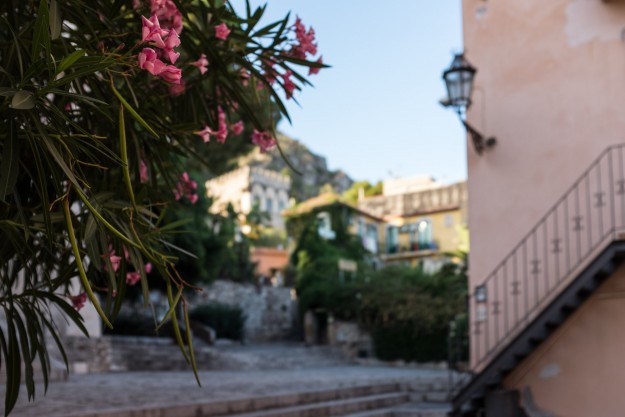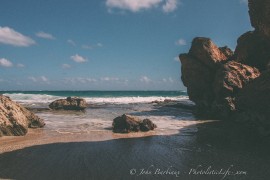Travel photography for the ordinary enthusiast, without proper planning, can be anticlimactic to say the least. If you’re traveling with family and friends you’ll have very little time to scout out the best times to visit areas when the light is optimal and then revisit them to photograph. You’ll likely get one shot on some days so you had better be sure the conditions are ideal. And that’s just the tip of the wholly mammoth entombing iceberg.
Set Expectations
The first issue that you’ll come up against is time, life is short and your trip is even shorter. If you’re traveling with family and/or friends you don’t want to be remembered as Adolf Timeblocker, you’ll want to let your travel partners know up front that you’ll want certain times to wonder off with your camera. I’ve found that if you set the expectation up front with your friends and family they will be more understanding.
I like to spend my afternoons with friends and family while leaving my morning open for the best lighting and a couple of evenings for the excellent lighting and sunsets. Depending on where you visit you may find the afternoons too hot or too harsh (lighting) so worry not.
Plan Ahead
If you are visiting someplace new and you are not familiar with the roads, trails, and general topography then you’ll likely have no idea the amount of time it will take you to get from point A to point B. Google maps is a great resource if you’d like to plan your journey ahead of time to get an idea of the amount of time you’ll need to set aside to reach your destination. Look for the little icons that you can select to switch from the different modes of transportation, walking, public transit, and car. You can set multiple way points (for instance, if you were taking a road trip up the east coast and wanted to visit multiple coastal villages on your way) and Google maps will calculate the commute time.
The only thing map programs won’t do is factor in the amount of time you will spend with your eyes glued to your viewfinder. The most disappointing part of travel photography is getting someplace and having to leave before you feel like you had a chance to capture everything you wanted. That and spiders, I hate spiders… They are rude and they crawl in your mouth while you sleep.
Packing Light
Resisting the urge to pack every lens you own, 16 batteries, six magazines with tips you’d like to try, 4 different lens cleaners, 2 tripods, and your family cat can be difficult. Being prepared for anything is tip numero uno in most travel photography guides and I agree. Instead of taking every lens you own think about the type of photography you’ll be doing and plan around that.
Landscape photography? Take a wide-angle zoom with you, something that ends in the 35mm to 85mm so you don’t have to change your lens as frequently (you won’t want to take a portrait of your children with a wide-angle lens unless you want to emulate a carnival mirror look, zooming out to the 35 to 85mm end of a wide zoom will reduce that distorted look).
Street Photography? Build around a nice 50mm or 85mm lens, I’d still use my wide-angle zoom for a bulk of the time because if I put a prime on my camera I leaving it on for the majority of the time. The flexibility of a zoom lens while traveling really appeals to me but I’m not interested in changing your mind if you shoot exclusively with primes. Primes are the better quality lens and more discreet than zooms, zooms are more versatile. No matter what your preferred lens type is 50 – 85mm is the sweet spot for street photography.
 Still Life/Abstract shots look great with a 35mm lens. This shot was captured with the Fuji X100S.
Still Life/Abstract shots look great with a 35mm lens. This shot was captured with the Fuji X100S.
Abstract/Still Life? This could be a subset of street photography and the venerable 70-200mm lens made by almost all manufacturers is the perfect lenses for this type of photography. You could use a prime as well and I’d recommend something north of 35mm but that’s purely preference, I’ve shot abstract and still life with lenses as wide as 24mm and had some great results.
Wildlife? Honestly… If I shot wildlife and traveled a lot I would invest in a mirror-less camera like the Olympus EM1 because it’s so small and light and the lenses are about a quarter of the size of traditional DSLR lenses. Understandably, not everyone is going to jump ship to a new brand so for the rest of us I’d recommend shopping around for a zoom that reaches at least 300mm (200mm is the rock bottom unless the wildlife you plan to shoot are domestic pets and farm animals).
The key is to plan. If you plan well you should be able to pack light and enjoy more. I like to pack my favorite travel zoom for versatility (the Nikon 24-85mm) and then I’ll take a pro zoom and/or a couple of pro primes and I’ve yet to come across a situation I could not photograph with 3 lenses (the three lenses vary depending on… You guessed it, my planning). With all that being said, if you’re just driving a few hours away and have room in the car then go wild, pack it all and have fun.
Making Money
Turning your travel photography into money may be the toughest challenge you’ll face, unless your name is Harry Potter. The most important factor to making money with your travel photography is capturing unique shots, shots that require you to get up before everyone else, hike far off the beaten path, and continue to photograph well after everyone else has headed to the Pub for a drink.
Though turning your passion into an income is difficult there is nothing more satisfying, here are a few different ways you can do this:
Stock Photography – From time to time I’ll upload some of my photography to Shutterstock for a small passive income. The best way to determine which pictures to submit is to visit Shutterstock and see what’s popular. You’ll need to make sure your photographs are virtually perfect when it comes to focus, sharpness, and composition. Your photography will be analyzed so be prepared to have some of your favorite photographs rejected due to minor issues.
Galleries – This is one of the easiest ways to sell your photography, especially if you have a unique eye. Check local malls for art galleries that sell photography of your city, if your photography is original then they will jump at leasing you some wall space. Typically you’ll pay a small amount each month to rent space on the wall to sell your photography as well as a small commission from each sell. The best way to get the ball rolling is visiting the store with ten or fifteen of your favorite photographs, taken in your local city, on 8×10 prints.
Website – You can make your own website, if you’ve got a portfolio website it does not take a lot to create a page where folks can purchase your prints. PhotolisticLife sells some of the photograph I take under the Buy Prints link in the main menu and setting it up took all of five minutes. The difficult part is pricing your photographs at a point that they sell but aren’t considered cheap. It’s better to start with a price that is too high rather than too low, you need to allow yourself to print, package, and ship your photography while retaining a small profit. On top of the printing, packaging, and shipping of your photography you need to factor in the effort you took to capture the photographs.
If you want to start your own site it pays to start using WordPress.org rather than WordPress.com… The difference? One is absolutely free while the other you’ll have to pay for hosting. WordPress.org is the one that you need to pay for hosting with but it allows you to monetize it however you like. The alternative, WordPress.com, only allows you to monetize your website by using their advertising model (some video at the end of each of your post) and you’ll be paid pennies (literally). You can use Amazon affiliate links on parts of your WordPress.com site but if they don’t like it they can delete your entire site… all the hard work you did down the drain. Trust me and go with WordPress.org for peace of mind.
Note: If you are thinking of selling your photography over the web then you will want to look into drop-shipping, this is where you pay another company to print, package, and ship your photograph to the end client without you having to pay shipping to receive the photograph and then pay to ship it back out again.
Resist The Urge
Resist the urge to take a bunch of crappy shots that encompass everything you see. When we visit beautiful places we naturally want to slap on the widest angle lens we can find and capture it all, this is a very common and poor style of photography that you’ll find strewn all over Flickr, Google Images, Facebook, and the likes. Look for the things that draw your attention in a scene and try to capture a photograph that emphasizes them. Use things like leading lines, the Rule of Thirds, and other compositional rules to enhance the already beautiful scene beyond the ordinary.
One of the most common compositional tools I see used in popular photography is the foreground object. Find a beautiful scene and capture something in the foreground to give the scene depth… The more interesting your foreground subject the more potentially distracting it will be if the background is your ideal subject so plan accordingly. Your depth of field effects this as well, the image at the top used a larger aperture (smaller f/number) and therefore the foreground is the subject while the photograph below used a smaller aperture (larger f/number) allowing the background to be in focus and demand some of the attention.
Get To Know The Culture
In some parts of the world photographing people is considered rude and down right frightening. You see, in some cultures a camera pointing at a person is too similar to a gun being pointed at someone that they could lash out at you. Yet in other cultures the people will swoon to get photographed and then harass you until you pay them for taking their photograph, not paying could mean injury or worse. It’s always a good idea to ask for permission before photographing someone, you should get to know your subject before taking their photograph.
In some parts of the world (the U.S. included) there are certain buildings that are illegal to photograph. It’s a good idea to research any restrictions if you are planning on photographing urban landscapes. I’m not sure about you but I’d be pretty bummed if the police took my SD card full of hundreds of great (wishful thinking) photographs just for taking a photograph of one building. Do your research!
Finally
One of the most important aspects of travel photography is putting your camera down and living in the moment. Now I’ll be the first to admit I have trouble doing this but I found a great compromise… Instead of taking my DSLR with me 24/7 I’ll drop the Fuji X100S (review here) into my pocket just in case. Always be prepared, that is my motto (also, never trust car salesmen.)






